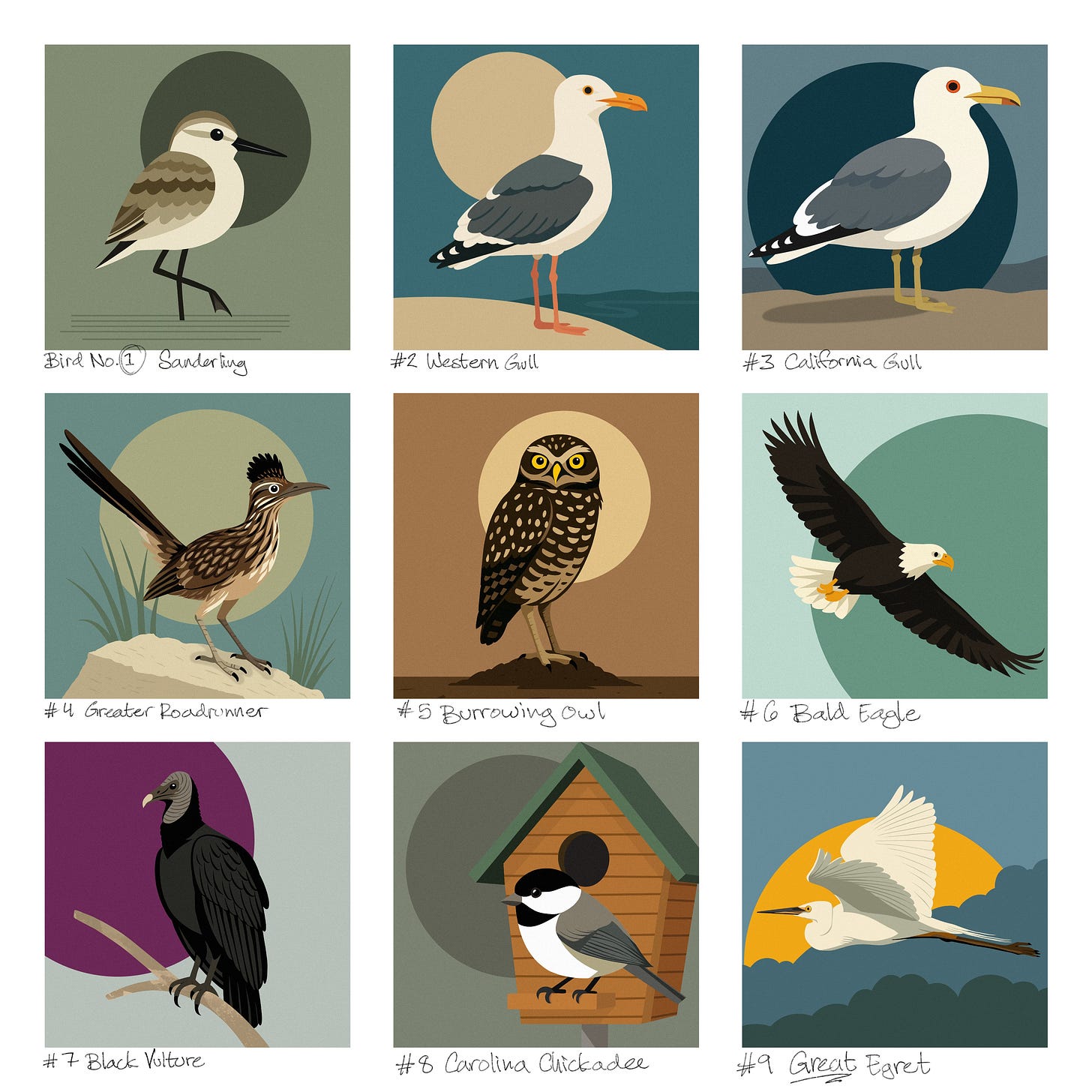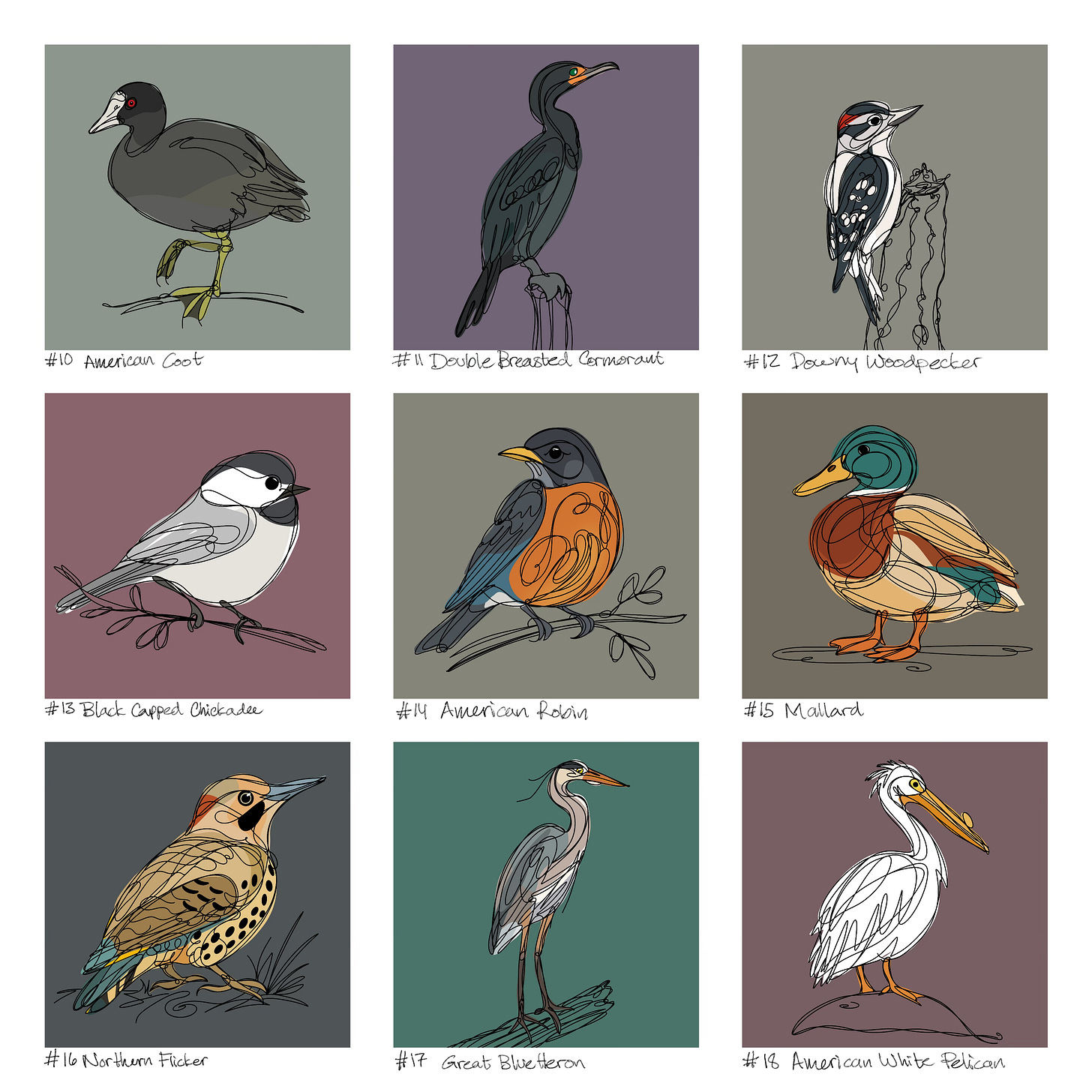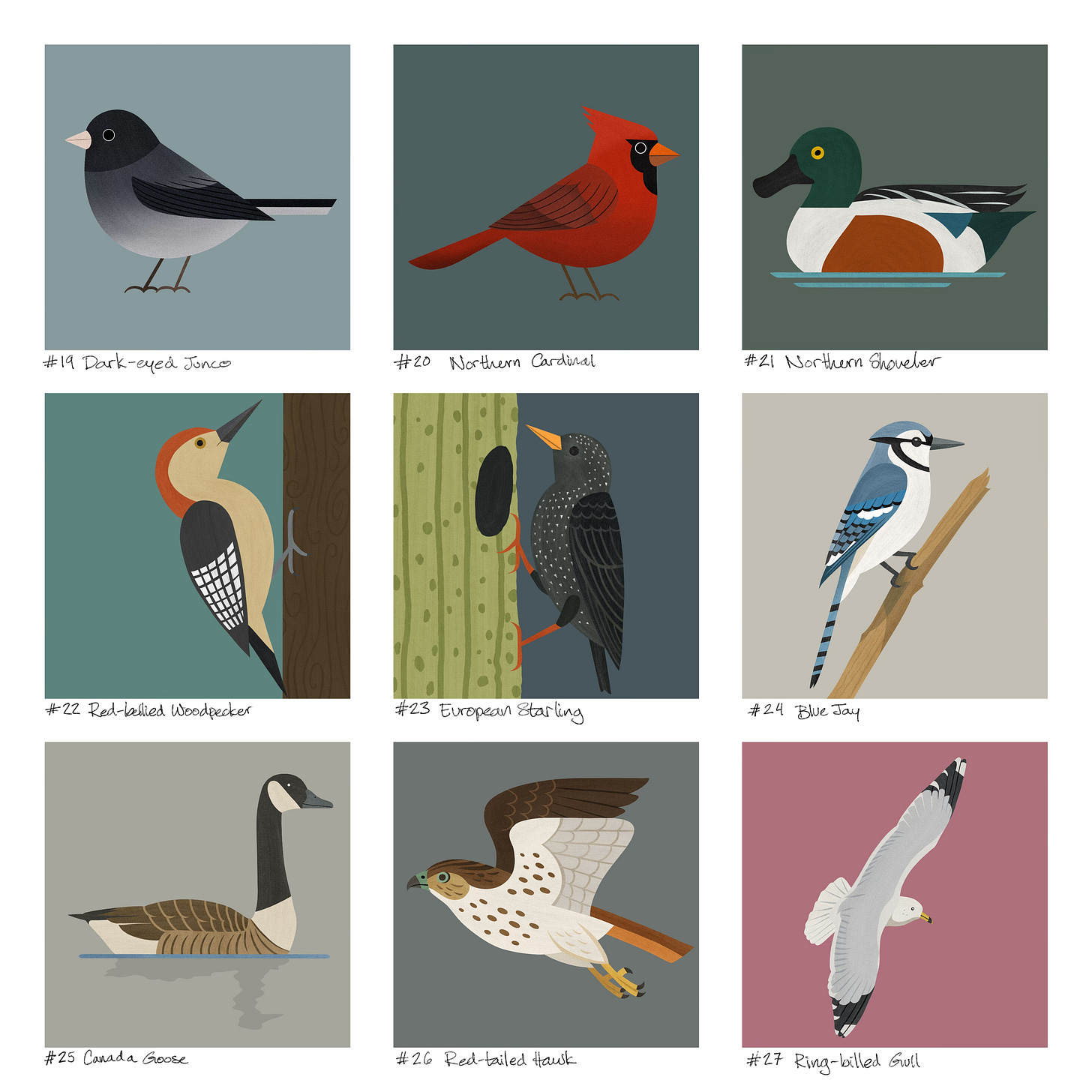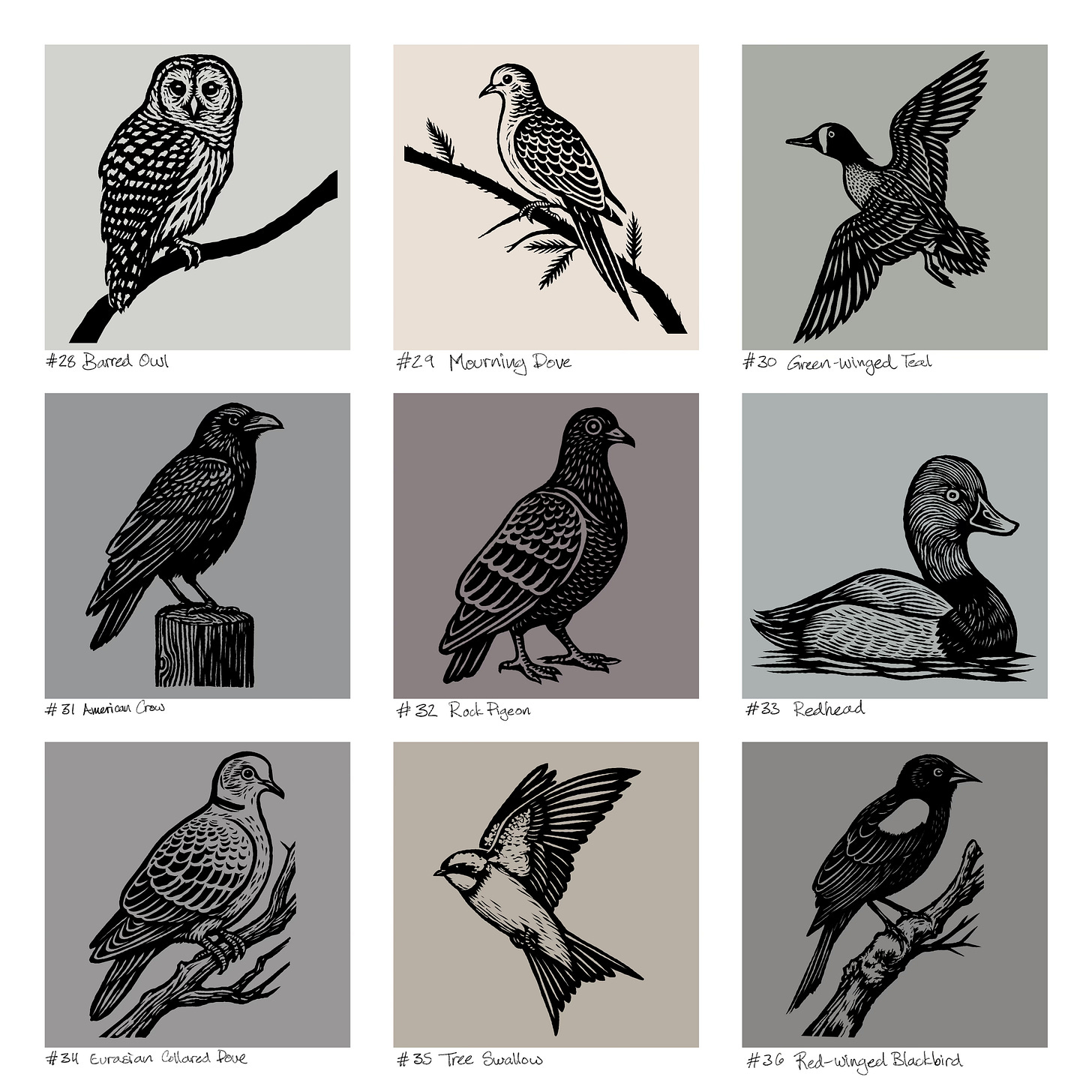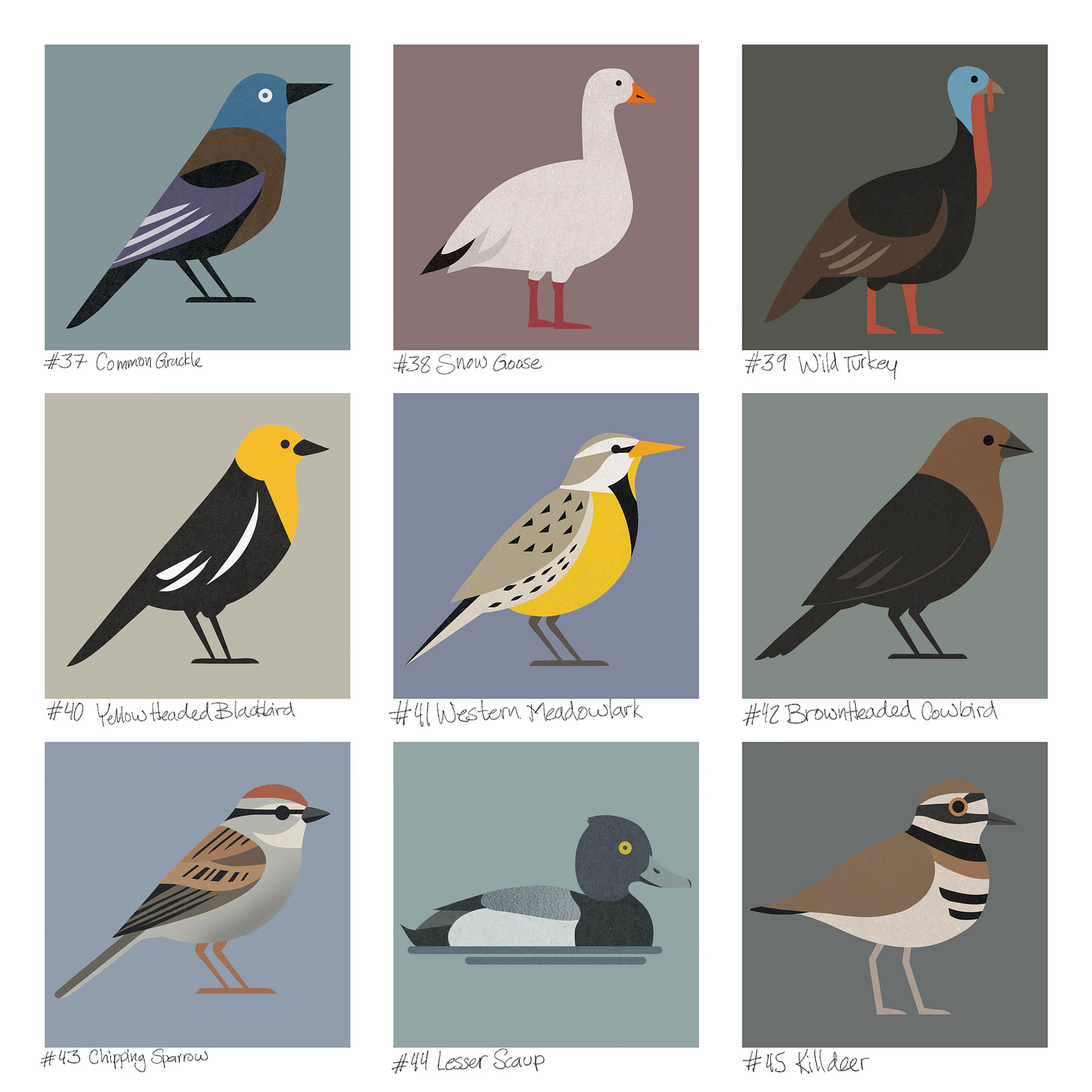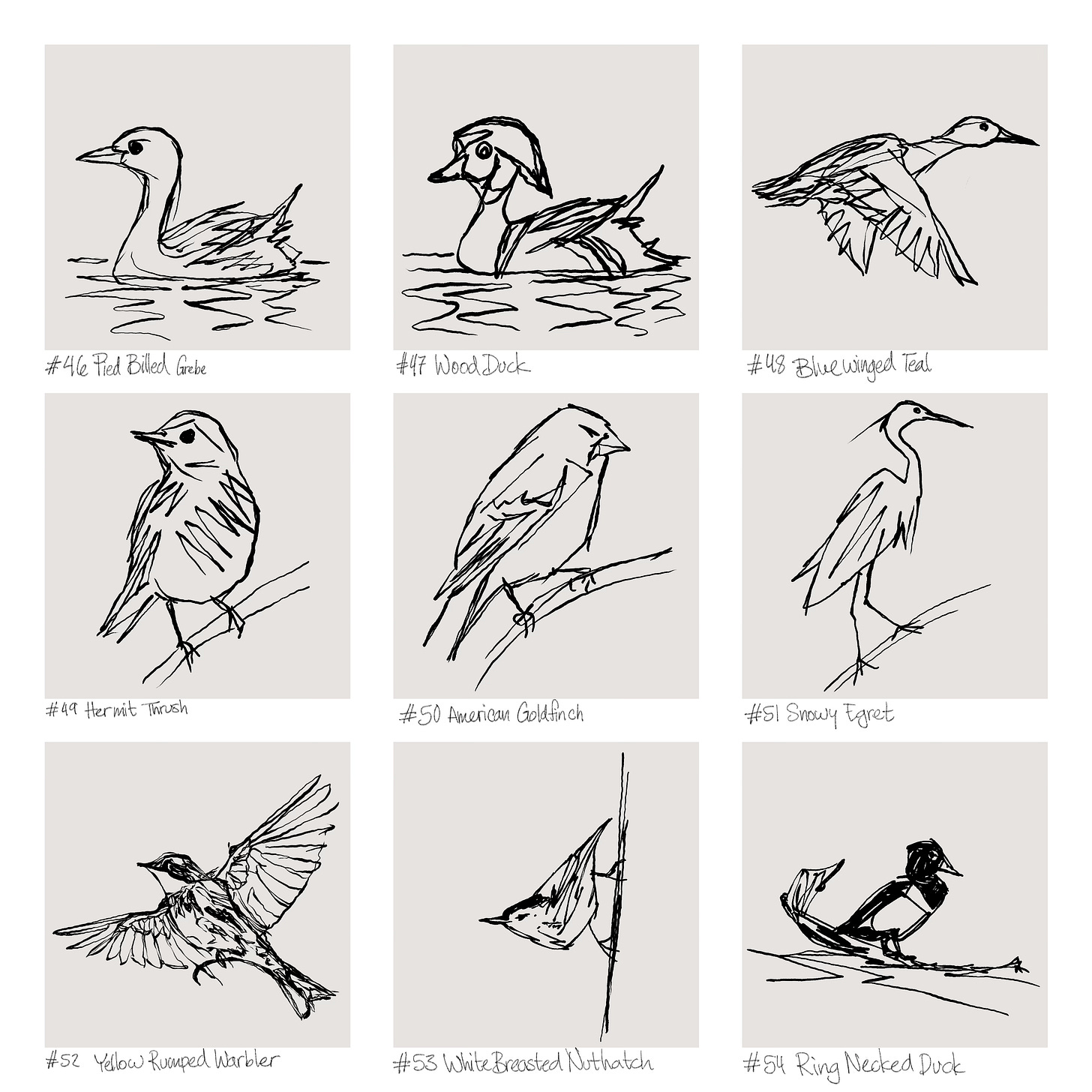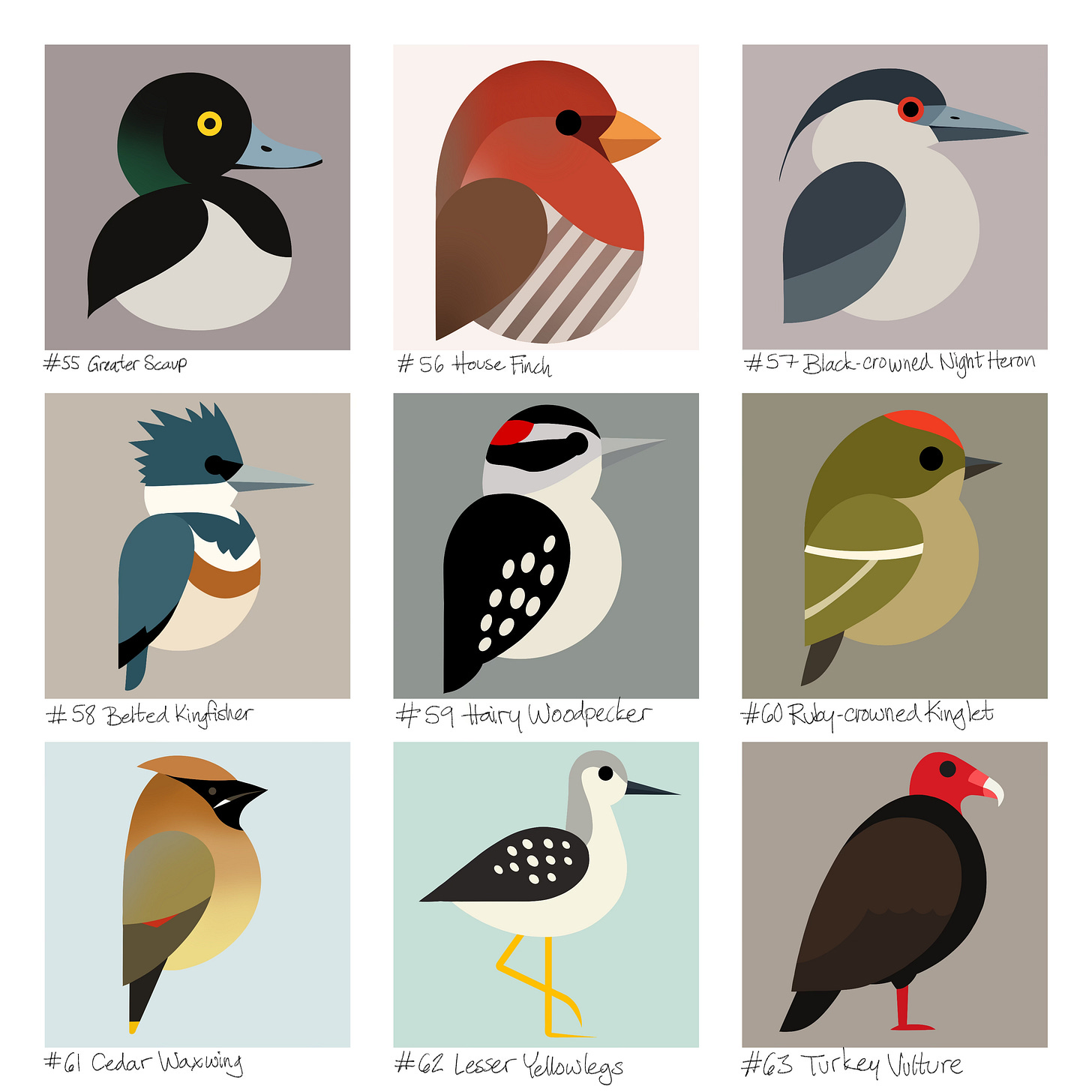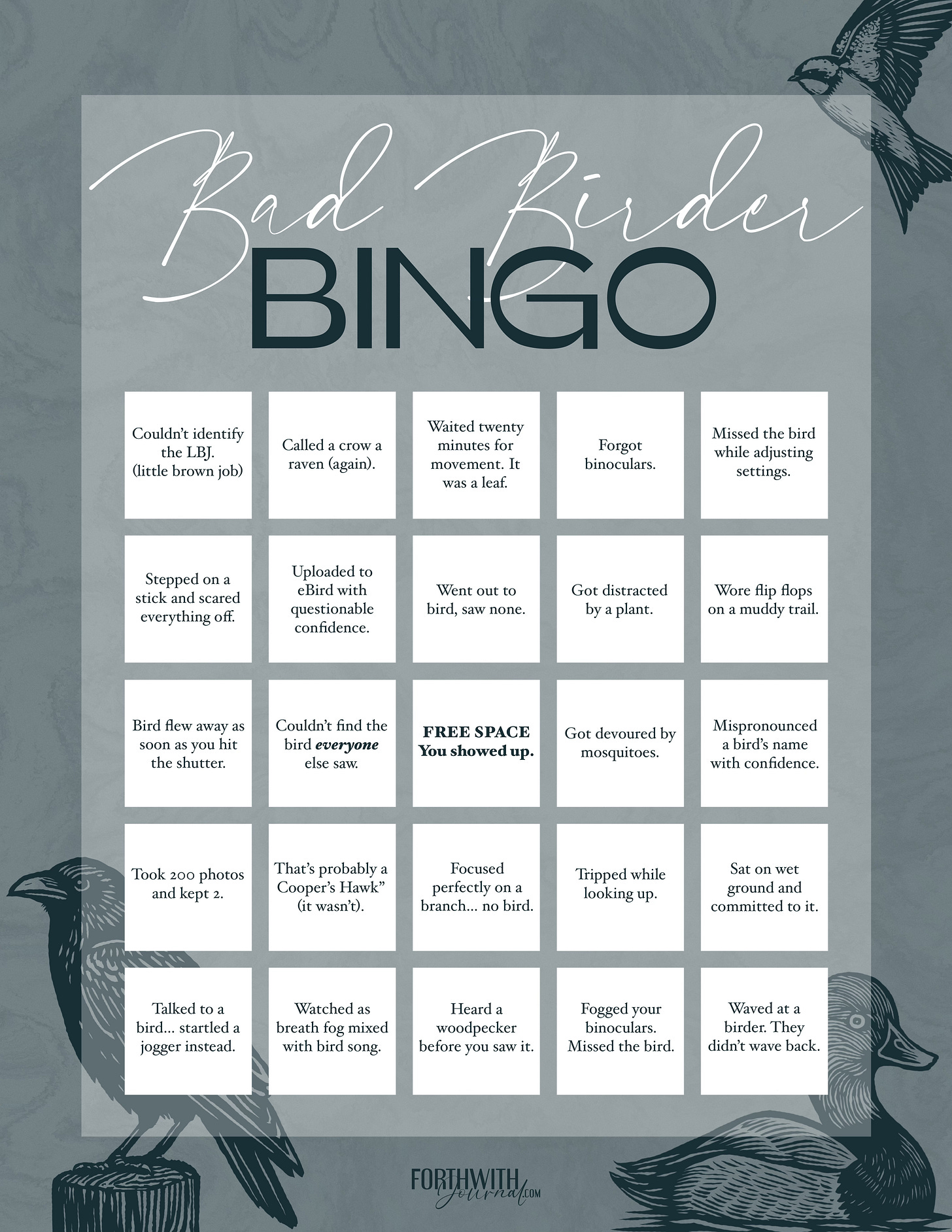On Being a Bad Birder
How being bad at something can actually be good for you.
Current Life List: 130 birds.
How long it took me to get those birds… I’d rather not say. But we can all agree I won’t be having any “Big Years” anytime soon. A few nemesis birds still seem to laugh at me every time I step outside and I struggle for each and every lifer… but I love it.
Here’s a quick primer on the major birding lingo:
Life List — the running tally of birds you’ve identified since you started keeping track. For me, that’s five years… and 130 birds. Oof.
Lifer — a bird you’re adding to your list for the very first time. (Usually celebrated with a digital confetti display in the Merlin app.)
A Big Year — the legendary challenge: see as many birds as you can in twelve months. Also the title of the film that pulled me into this mess.
Nemesis Bird — the one species you keep missing. Even when you go out especially for it, you never can quite manage to find the turd bird.
The Benefits of Birding (aka Noticing)
There’s a lot of good that comes from doing something you’re not instantly good at. People like to say, “practice makes perfect,” but that’s never true. Practice just makes better. In my case, practice makes less pathetic.
Most of us aren’t good at the things we first try. I certainly wasn’t when I started birding… and I’m only marginally better now. But better is enough for me, it means progress.
The beauty of birding is that it changes how you see the world. A park you’ve visited fifty times before feels different when you walk it with the hope of spotting a new lifer. Trails that once felt familiar feel new again when you start looking up, listening and searching for flashes of color or movement. Even when I’m traveling through a new state, I find myself pulling over just to log a bird (any bird) so my eBird map can proudly claim another territory.
On my worst birding days, I still win. I’m outdoors. I’m moving. I’m breathing fresh air and soaking in the sunlight. Even if I don’t find the turds I initially set out to chase, I still see new sights. That makes the pursuit of those elusive nemesis species all the more enticing. Some days are explosive with bird song and sightings and other days… well, at least you got some exercise.
No One Right Way
Once I crossed my milestone of 100 birds on my life list I decided to take on a different challenge: expanding my art repertoire. Nine birds at a time, I’m working through them in different styles, my own version of a naturalist’s field notes. Birding gave me a way to practice art; art gives me ways to grow.
Art isn’t the only way birders “branch” out. What begins as adding lifers often introduces you to other fields. Some fall in love with chasing elusive audio recordings. Others devote themselves to cataloguing. Many are drawn into photography — myself included. Everyday people quietly become amateur contributors to science and art.
Birding doesn’t just tune your eyes to birds, it sharpens them toward everything. Tiny flowers that usually go unnoticed, varied tree trunk textures and macro photography moments directly underfoot. Searching for “just one more” bird taught me to notice those hundreds of small things I would’ve otherwise walked right past.
The birders I’ve met along the way have all been so generous. Always eager to pass along encouragement, to share what they’ve learned and to show you their way of doing things. The clearest lesson birding has given me: there’s no one right way.
Birding is like art — subjective and imperfect. It’s more of a journey toward your own version of competence. You don’t need the fanciest binoculars or perfect shoes. You don’t even need the “right” locations. You can bird wherever you are, however you are. More often than not, I’m in flip flops, without binoculars, frantically checking Merlin to assure myself that yes, I really did just see a Red-tailed Hawk from fifty feet below.
If you’re interested in getting started with birding, there are really only two apps you need to feel like a pro: eBird and Merlin Bird ID.
eBird — the central hub for recording your sightings, keeping your life list, tracking your hikes and exploring sighting reports near and far.
eBird Essentials (Course) — a free, beginners course that walks you through using eBird and Merlin effectively (certification included).
Audubon Beginner’s Guide to eBird — a walk through for new users, teaching you how to navigate eBird and birding in general.
Merlin Bird ID — THE app for quick bird identification by photo, sound or description — integrates with eBird.
Creating an account with eBird unlocks a surprising number of related websites, all using the same login. Some require subscriptions, but many are free and filled with great resources:
Cornell Lab Academy — home to online birding and ornithology courses, from beginner to advanced ($$).
Birds of the World — an encyclopedic resource with detailed accounts of every bird species on earth (subscription mostly required).
Celebrate Urban Birds — a community science project designed to connect cities with the birds around them.
Great Backyard Bird Count — an annual global event each February where anyone can submit bird sightings to help track populations.
Macaulay Library — archive of bird photos, videos and sound recordings collected from everyday birders worldwide.
NestWatch — a program for monitoring nesting birds and learning about breeding habits.
All About Birds — a free, user friendly field guide to North American birds, plus news and tips from the Cornell Labs.
Here’s why I still (and probably always will) call myself a bad birder: it took me until Bird #61 to finally spot my first Cedar Waxwing. And I still haven’t seen a Western Kingbird, even though they’re common in my area. Every time I set out determined to find one, I come back without my mark.
Somewhere along the way, I stopped seeking specific birds and started enjoying the little adventures instead. Now, when I step outside, I bring my camera and let the sun and songs pull me further down the trail until I eventually wander back, muttering that I should’ve turned around sooner. It’s no longer about the challenge of seeing every possible bird — it’s become a way to see, a way to be.
That’s the thing about birding: you don’t need to be great at it for it to be good for you.
For Anyone Who’s Ever Missed a Bird
I made a Bad Birder Bingo card you can save or print. Check off whatever feels familiar and if you fill a whole line (or the whole board), you’ve officially earned your wings and bragging rights.
No prizes, no pressure — just a little camaraderie for everyone who’s ever scared off the bird, mistook a leaf for a bird, or logged something with “questionable confidence.”
Bad birders unite!


